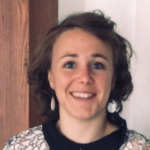Link to Pubmed [PMID] – 35349713
Link to DOI – mfac02210.1093/mtomcs/mfac022
Metallomics 2022 Mar; ():
Iron-sulfur (Fe-S) clusters are inorganic ubiquitous and ancient cofactors. Fe-S bound proteins contribute to most cellular processes, including DNA replication and integrity, genetic expression and regulation, metabolism, biosynthesis and most bioenergetics systems. Also, Fe-S proteins hold a great biotechnological potential in metabolite and chemical production, including antibiotics. From classic biophysics and spectroscopy methodologies to recent development in bioinformatics, including structural modeling and chemoproteomics, our capacity to predict and identify Fe-S proteins has spectacularly increased over the recent years. Here, these developments are presented and collectively used to update the composition of Escherichia coli Fe-S proteome, for which we predict 181 occurrences, i.e. 40 more candidates than in our last catalog (Py and Barras, 2010), and equivalent to 4% of its total proteome. Besides, Fe-S clusters can be targeted by redox active compounds or reactive oxygen and nitrosative species, and even be destabilized by contaminant metals. Accordingly, we discuss how cells handle damaged Fe-S proteins, i.e. degradation, recycling or repair.



